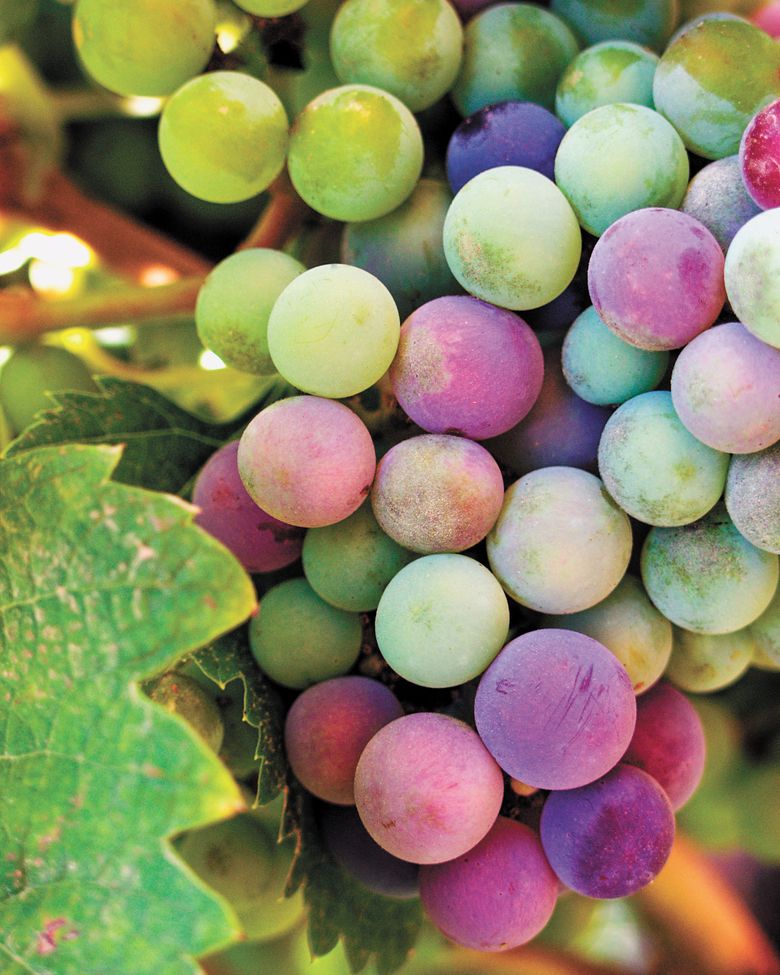Here comes harvest…
Learn more about the grape ripening process

By Dr. Greg Jones
Grapevines across Oregon have recently completed one of the major stages in their annual cycle. These growth and development stages are called phenology, events that recur periodically in plants and animals that are largely influenced by weather and climate factors.
The word “phenology” comes from Greek, then old English, meaning the study of or knowledge of phenomena. For centuries, winegrape growers have used phenology to track and compare growth cycling from year to year. It’s also useful when making decisions around activities from site selection to cultivar and rootstock choices to spraying, fertilization and harvest planning.
The phenology of grapevines has been standardized in the modified Eichhorn-Lorenz system, allows growers to observe growth cycling in a consistent manner. The system has a total of 47 growth stages or events, eight of which are considered major.
Vines across Oregon have recently gone through one of these major stages: véraison (“verr-Ray-zohn”). Originally a French term, véraison has been adopted into English use. The term officially defines a change of color in the grapes but also represents a significant transition from berry growth to berry ripening.
Before véraison, berry development occurs mostly through cell division and expansion. The berries are still green and firm (about half the size they will be at harvest), high in organic acids with very little sugar. During véraison, the berries go through a period of rapid physical and chemical change, initiating the ripening stage. The grapes begin to soften and enlarge, accumulating sugar, and changing color to translucent greenish to yellow (white varieties) or red-purple hue (red varieties).
The onset of véraison does not occur uniformly across all berries on a cluster nor across clusters on a vine or even across vines in a block. This period produces a beautiful patchwork of color (see photo) from green to pink to light red to red for red varieties, ultimately filling out across the vines over a week or two. While the color is changing, berry acidity is simultaneously transforming and degrading as sugars are accumulating. During this time, the accumulation of sugar reduces the volume of water entering the berry relative to the volume of sugar, thereby increasing sugar concentration. Sugar accumulation can ultimately reach around 25 percent during ripening, increasing further only if the berries lose water due to dehydration. Ripening fruit also develops many aroma compounds and polyphenols, a class of chemical compounds to protect them from sun damage. While winemakers welcome these fruit characteristics, ripening berries also become more attractive to animals as aromas change from more acidic to sweeter with more fruitiness.
While a region’s climate and weather during a vintage is the main driver of véraison timing, there are some vineyard factors that can influence the onset of véraison, and, therefore ripening. A certain level of water stress, either naturally or by limiting irrigation, along with canopy management, can create a higher ratio of fruit to leaves, encouraging earlier véraison and more rapid ripening. On the other hand, if the grapevines have too much water, producing too much vegetation relative to the amount of fruit, then the energy needed for ripening is focused in the leaves instead of the fruit.
From a weather perspective, growers prefer a post-véraison period with warm days and clear skies, allowing high solar radiation for continued optimum photosynthesis. During this time, heat stress can reduce vine photosynthesis and slow sugar accumulation, leading to rapid loss of acidity, scarring, cracking and discoloration. Untimely rain can also be damaging. Too much precipitation can cause the softening berries to split or initiate late-season fungal infections.
Véraison usually signals the countdown to harvest— depending on the weather conditions—typically 40-50 days before fruit is ready for picking. The significance of this growth stage has even generated regional festivals. For example, in Châteauneuf-du-Pape, they have celebrated the Fête de la Véraison since medieval times.
I certainly hope you had a wonderful “Fête de la Véraison” and that ripening in Oregon is proceeding toward a spectacular harvest!








